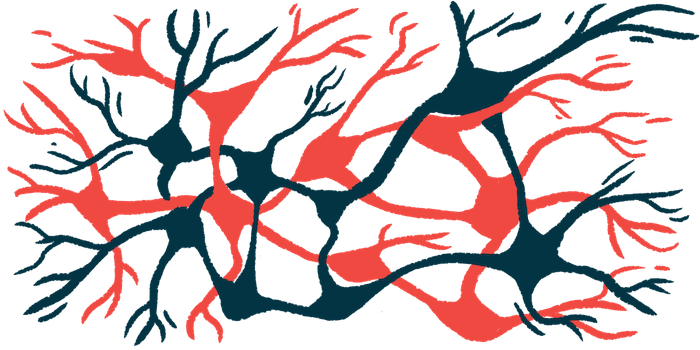NF-kappaB Pathway May Be Useful Therapeutic Target for NMOSD
Astrocytes use this chain reaction in part to make inflammation driver IL-6
Written by |

Astrocytes, star-shaped cells found around nerve cells, make an inflammation driver of neuromyelitis optica spectrum disorder (NMOSD) called interleukin-6 (IL-6) in part by gearing up a chain of reactions involving nuclear factor kappa B, or NF-kappaB, according to a study in rat cells.
Researchers also observed that by blocking the chain reaction (known as a signaling pathway) using an inhibitor called S3633, the astrocytes decreased the amount of IL-6 they made in response to a pool of antibodies from patients diagnosed with NMOSD.
The findings mean that the NF-kappaB signaling pathway could “provide a promising target and potentially useful strategy for the treatment of NMOSD,” the researchers wrote.
The study, “NMO-IgG induce interleukin-6 release via activation of the NF-κB signaling pathway in astrocytes,” was published in the journal Neuroscience.
NMOSD happens when an overactive immune system turns against myelin, a fatty material that serves as a protective cushion for nerve cells, or neurons, all along the spinal cord and the optic nerves (those that connect the eyes to the brain).
In most patients, NMOSD is caused by antibodies against a protein called aquaporin-4 (AQP4), a water channel that keeps the amount of water in the brain in check. AQP4 is found mainly on the surface of astrocytes, which support neuron communication among other functions. When AQP4 is lost, astrocytes may go awry and call for an immune response that can cause inflammation.
What is interleukin 6?
An interleukin is a type of protein made by white blood cells and some other cells in the body to help mount an immune response. One interleukin, called IL-6, can be made by astrocytes themselves. It not only helps keep inflammation going in the nervous system, but also is involved in the production of antibodies against AQP4. Its receptors are the target of Enspryng (satralizumab), a medication approved for the treatment of NMOSD in patients with antibodies against AQP4.
The researchers already knew that the production of IL-6 depends on JAK/STAT3, a signaling pathway that helps cells grow and survive. But despite its importance in inflammation, the role of NF-kappaB had yet to be studied.
To know more, the researchers, based in China, took astrocytes from newborn rats into lab dishes and watched how much IL-6 they produced when fed a pool of antibodies from patients with NMOSD. The pool, which the researchers named NMO-Ig, was checked for the presence of antibodies against AQP4, which were present at a level of 54.3 units/ml. The study used a diluted solution containing 4 units/ml of antibodies against AQP4.
First, the researchers checked whether serum derived from the blood of 59 patients with NMOSD was richer in IL-6 than that of 21 healthy (control) individuals. They found that the level of IL-6 was about 50% higher in the serum of patients than in controls (3.2 vs. 2.1 picograms/ml).
In lab-grown untreated (control) astrocytes, AQP4 was evenly distributed around the surface. But when fed with NMO-Ig for four hours, AQP4 started to gather in clumps before being brought inside the astrocytes.
Moreover, NMO-Ig-fed astrocytes produced more than six times the amount of IL-6 compared with control astrocytes. At the same time, NF-kappaB became active and entered into the nucleus, a structure in cells where it can bind to DNA and set off a chain of reactions.
To find out whether the increase in IL-6 could be cut short, the researchers used S3633, a molecule that inhibits the NF-kappaB signaling pathway. They found that adding S3633 one hour before the NMO-Ig significantly reduced the release of IL-6 from astrocytes. When S3633 was added together with AZD1480, an inhibitor of the JAK/STAT signaling pathway, the amount of IL-6 was more than halved.
“These results prove that the production of IL-6 is partly mediated by the [NF-kappaB] signaling pathway,” the researchers concluded, adding that “specific inhibitors are promising therapeutic agents for NMOSD.”







